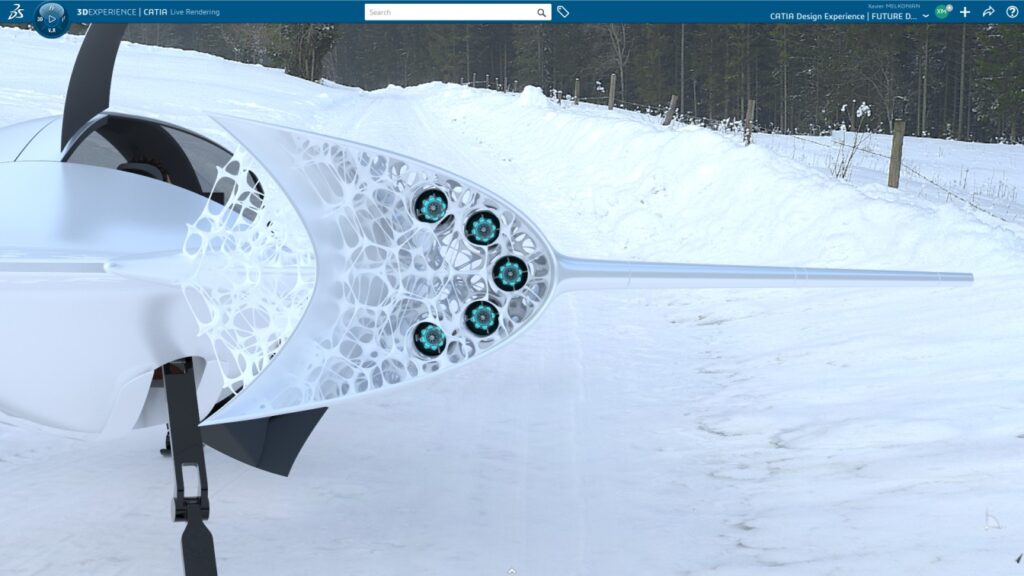In the realm of transportation design, a forward-thinking project is underway, aiming to revolutionize the concept of vehicles for the year 2050. Drawing inspiration from an abstract form known as ‘Oloid,’ the initiative seeks to expand the boundaries of current imagination, emphasizing creativity and innovation with a focus on technology. Takumi Yamamoto, an experienced industry designer with a rich background in car design leads the project, exploring the potential of aerial transportation while paying homage to the heritage of the car industry.
Envisioning the 2050 Transportation Experience
A future transportation project, aimed at reimagining the concept of vehicles for the year 2050, is introduced. It is presented that creativity and innovation in technology are the driving forces behind this endeavor. The project’s vision is to conceptualize what vehicle experiences might be like three decades from now, pushing the boundaries of today’s imagination.
An abstract form known as ‘Oloid’ serves as the inspirational cornerstone for this initiative, chosen specifically to challenge conventional thought processes and encourage a departure from traditional design paradigms. A synergy between design and technology is crucial to this project, with experienced industry professionals leading the way. The chosen theme revolves around aerial transportation, with a focus on remaining abstract to avoid underestimating future technological advancements.

Embracing 3D Technology in the Creative Process
In the realm of industrial design, a significant shift is currently underway with the transition from traditional 2D design methods to advanced 3D technologies. A remarkable utilization of such technology has been observed in the design of future transportation systems.
This shift to a 3D creative process enables designers to express their creativity more freely and immediately in a three-dimensional space, rather than being confined to the limitations of pen and paper. The impact of this technology on the initial design process cannot be overstated. It allows for an immediate transition from an abstract concept to a tangible 3D model, facilitating a more collaborative and efficient workflow between designers and modelers.
Fostering Innovation Through Collaborative Design on the 3DEXPERIENCE Platform
In the endeavor to envision a transportation system for the year 2050, a pivotal aspect is highlighted – collaboration facilitated by the 3DEXPERIENCE platform. The project’s success is attributed to the collaboration amongst diverse talents and locations, seamlessly integrated through the platform. The 3DEXPERIENCE platform emerges as the foundational element, acting as a cloud-based single source of truth, thereby underpinning the collaborative efforts of all involved parties.
The 3DEXPERIENCE platform’s capability to merge various expertise in a virtual environment, it substantiates the principle that collaboration is instrumental to the realization of groundbreaking innovations.
CATIA Creative Design Experience allows designers to easily and naturally express their first design intent by sketching and sculpting in 3D in virtual reality. It includes virtual humans, which gives the designer a better understanding of the perception of the human experience.
Xavier Melkonian, CATIA Design Portfolio

Sustainability: The Heart of Future Transportation Design
In the envisioned transportation system for 2050, sustainability is not just an afterthought but a core aspect of the project. The introduction of the ‘ECO design engineer’ role and application is a testament to this focus. It enables a comprehensive 360-degree design assessment to minimize environmental impact, scrutinizing every aspect from material use to manufacturing processes, delivery, and recycling.
This holistic approach ensures that the environmental footprint is considered right from the early design phase. The commitment to sustainability is evident in the adoption of practices such as early aerodynamic performance checks. These simulations are conducted to strike a balance between aesthetic design and energy efficiency, aiming to reduce CO2 emissions and enhance the vehicle’s aerodynamic properties.
To imagine what could be possible for mobility in 2050 is almost impossible. With this project, I wanted to challenge conventions, not like a sci-fi movie but to create something new to inspire the future of transportation
Takumi Yamamoto, a Japanese industrial designer
Conclusion
In conclusion, an avant-garde transportation system for the year 2050 is conceptualized, where abstract thought is transformed into a sustainable and efficient aerial vehicle design. The integration of transformative 3D technologies facilitates a seamless creative process, enabling the direct transition from ideation to three-dimensional modeling. Emphasis is placed on the environmental impact of design choices, ensuring that sustainability is woven into every aspect from the onset.
To watch this User Testimony and to discuss with thousands of CATIA experts, join the free online user community: go.3ds.com/catia
